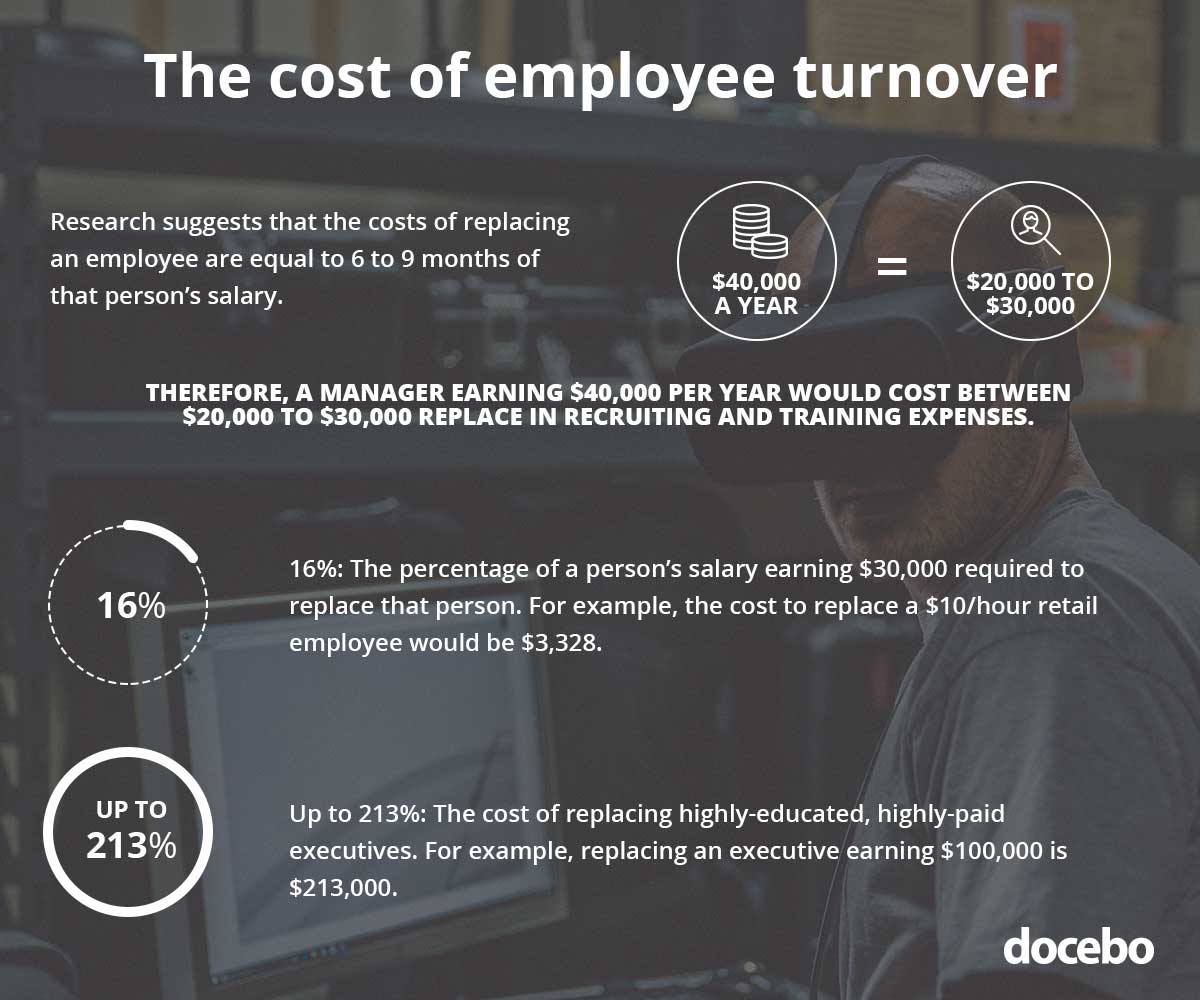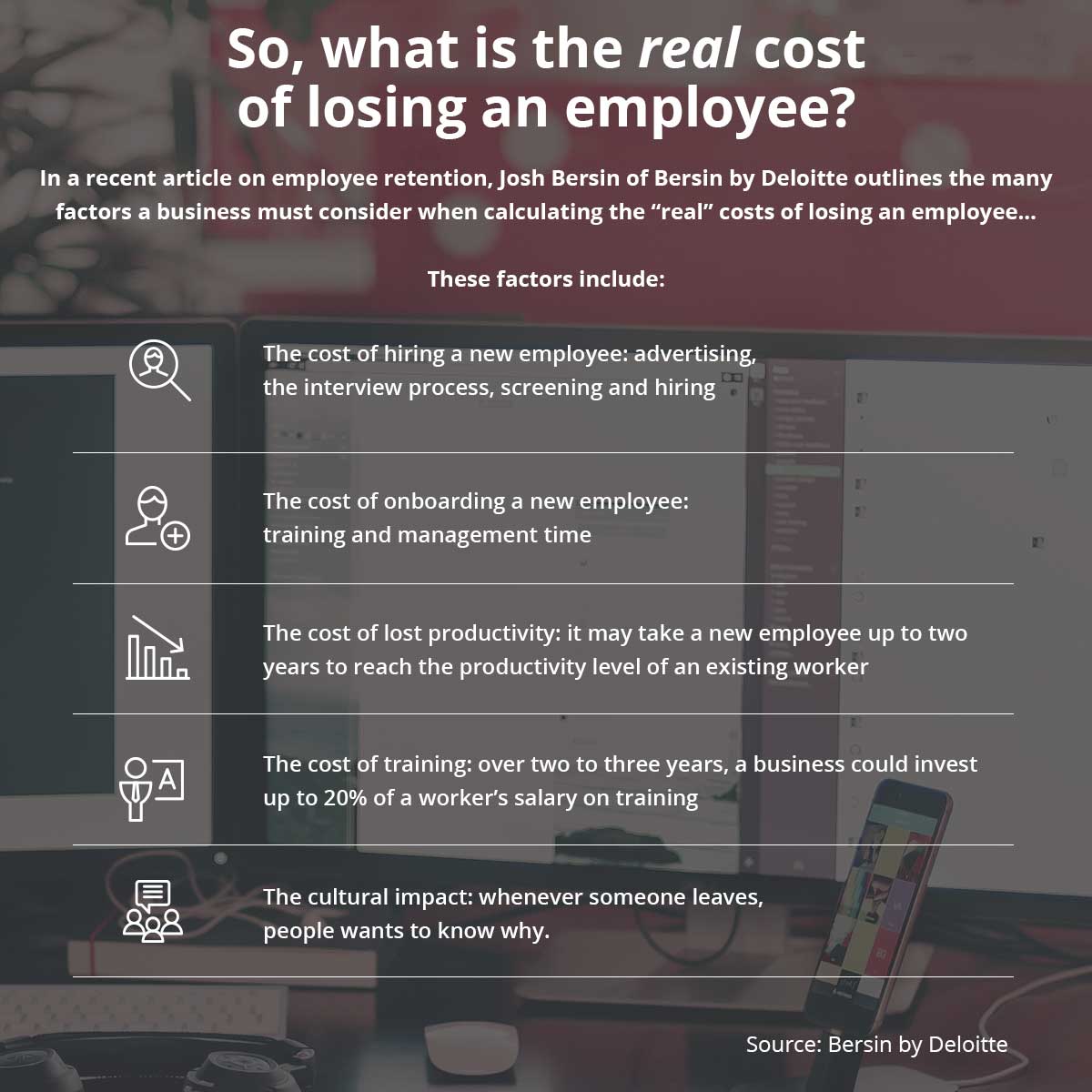
Understanding The Connection Between Upskilling, Engagement And Employee Retention
Today’s employees enjoy a mobility like no other generation has before them, giving them the ability to come and go throughout their careers, tackling different challenges that touch on different facets of their skill sets – and at different companies. They want opportunities to develop, both personally and professionally, and are more likely to stick around companies that offer those benefits.
Problem is, that mobility can have a significant impact to a company’s bottom line, and there’s no voice louder than dollars and cents to encourage today’s organizations to move to minimize disruptions related to employee retention issues. After all, encouraging your employees to seek out new skills that satisfy the needs of your organization’s growth are not only an effective way to bump your bottom line, but also gives the employee a shot at a promotion, more money, increase workplace productivity and to become a valuable mentor of the business’s next generation.
Upskilling is more than just a buzzword. It’s a crucial tool that more of today’s organizations must consider as a way to bridge gaps related to employee engagement and retention. In fact, the labour turnover rate in the US was 20.3% in 2016, and just 40% of companies undertook specific initiatives designed to improve retention. The issue is compacted further by the fact that 33% of US employees considered themselves engaged with their positions, compared to 70% among the world’s top performing organization.
Skills are a valuable commodity to any organization. Developing those that exist from within represent an incredible opportunity for your organization to engage and retain employees, and boost your bottom line. This idea shouldn’t come as a surprise, as it’s well-known that all valuable employees want to be able to adapt to any situation or challenges their job places upon them.
Why Your Organization Needs to Upskill Its Employees
The mismatch between skills and organizational needs continues to grow, with the digitization of business to blame. On the other hand, businesses need to get better about building and developing existing employees, while making reducing their reliance on the external labour market and associated recruitment costs.
One way to do so is by tailing development to meet the organization’s skills requirements of the future and anticipating how those needs will change and continue to evolve over time. For example, developing a strategy that focuses on upskilling hard-to-fill positions might be effective in reducing turnover and retention issues, and the time it might take to fill that position should an existing employee leave.
Benefits of upskilling include:
Improved productivity: for example, if your employees don’t understand your organization’s technology well enough, they may become less productive. Upskilling with new technology is therefore crucial to the continued success of your organization.
Retention: Employees who recognize that their employers are invested in their personal growth are more likely to stick around for the long haul. If they’re given opportunities to grow, they’re more likely to be happier and more motivated to work and exceed expectations.
Customer Satisfaction: Satisfied employees have a direct impact on customer happiness.

How to Effectively Upskill and Boost Employee Retention
Establish personalized learning and development plans: aim to understand each employee’s role instead of viewing employees as a group. In an e-learning capacity, it’s vital to emphasize the value of the learning materials and why it’s important to each employees’ development. Seek out opportunities to deploy a blended learning approach, in which employees upskill with content that’s delivered in formal, social and experiential learning formats.
Doing so helps the organization identify those who may become valuable stakeholders throughout the entire process, and could eventually act as mentors or coaches for others along their learning journey. This approach also encourages learning in the flow of work by solving actual, day-to-day business challenges and then sharing the knowledge produced from solving particular issues.
Include real-life scenarios: Deploying an e-learning centric strategy to bring your upskilling goals to life requires you to offer learning opportunities that put the concepts and experience your employees will encounter into practice. Also provide opportunities to analyze and provide feedback on existing use cases within the organizations, and ask them to offer insights on opportunities for improvements. For example, if you’re looking to enhance your inbound marketing techniques, have existing employees listen to calls, get their feedback and see how their thinking could improve the process.
Don’t forget branching scenarios and gamification that center on skills: Effectively building skills in the modern age requires adding interactive online training content. Encourage upskillers to put their new skills sets into practice with branching scenarios, simulations and serious games. Try to make e-learning activities as close to real-life as possible by integrating real-world images, characters and scenarios. Employees will feel more empowered if they’re able to access their learning content when they so choose, instead of having content pushed upon them, as is the case in more formal corporate learning scenarios.
Take it one skill at a time: Don’t overwhelm learners. Do your best to understand how you can fill your skills gaps by assessing your employees’ existing abilities and compare them to the desired result. Only then should you develop your e-learning activities and content to cater to individual employee needs instead of deploying generalized exercises that might not be directly related to their upskilling exercises.
Improve retention by integrating previously acquired skills into proceeding modules – let them apply what they’ve learned!
Give them opportunities to access supplemental learning resources: This is a great way for learners to consume content that’s related not only to their upskilling activities, but also those that satisfy their personal interests. There’s always going to be the few people who want to upskill on their own time and take their abilities to the next level. Learning assets, such as blog, slide presentation, podcasts, webinars and videos are also invaluable for those struggling with their upskilling because it gives them access to additional learning content.

Aiming to Retain and Upskill Top Performers Boosts Your Bottom Line
The costs of replacing employees is significant. In fact, each time a business replaces a salaried employee, the cost of replacing him/her can be equal to 9 months salary. So, if a manager earning $40,000 leaves your organization, it might cost up to $30,000 in recruitment and training costs to replace that person.
Upskilling as a tool to encourage employee engagement and retention presents a clear benefit to not only your organization’s bottom line, but also to the well-being of your workforce, especially as it relates to performance.
They need the tools to go above and beyond, especially when it comes to skills. Doing so requires the ability to facilitate upskilling effectively via e-learning programs that centre on upskilling from the get-go.
Docebo is the only e-learning platform that combines formal, social and experiential learning with skills management to maximize learner performance. With an emphasis on blended-learning, Docebo allows you to hone your upskilling activities, identify skills gaps that need filling and establish defined learner journeys to ensure your e-learning strategy meets the needs of not only your organization, but also drives the performance and happiness of your employees.
The post Upskilling: The Modern Organization’s Secret Weapon appeared first on Docebo.
Upskilling: The Modern Organization’s Secret Weapon original post at Docebo
No comments:
Post a Comment